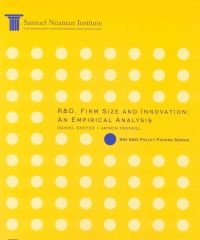Investment in R&D spawns innovations, which in turn foster economic growth. In recent years, researchers have become increasingly aware of the role of industrial innovation in the rate of regional development and economic growth. In order to innovate, firms must invest in R&D (in-house or out-sourcing), and engage highly skilled labor that is able to cope with complex technological problems. The plethora of empirical studies on the determinants influencing R&D expenditure, and thus the rate of innovation, suggests that this investment is related, in different degrees, to firm size, organizational structure, ownership type, industrial branch and location. Large firms tend to invest more in R&D than do small ones. Numerous studies have found that R&D tends to be concentrated in large urban areas, and it plays a more vital role in creating innovation in central than in peripheral areas.This paper presents a model whose assumption is that expenditure on R&D is influenced by a firm’s characteristics – primarily its size, type of industrial branch, ownership type and location. The results obtained in the empirical analysis are based on data collected through personal interviews involving 209 industrial firms in the Northern part of Israel
 / Publications / R&D, Firm Size and Innovation: An Empirical Analysis, SNI R&D Policy Papers Series
/ Publications / R&D, Firm Size and Innovation: An Empirical Analysis, SNI R&D Policy Papers Series











